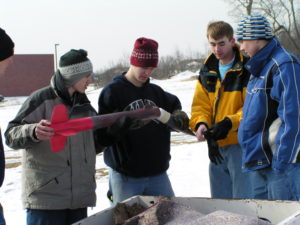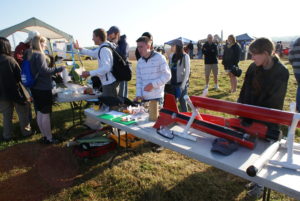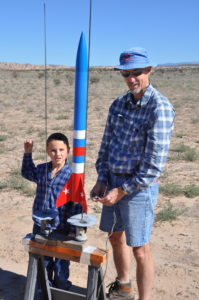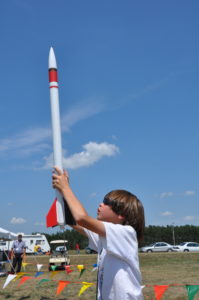Safety Information

Is Sport Rocketry A Safe Activity? Absolutely!!
In 1957, the first professionally-manufactured rocket motor was designed and produced for general consumer use. Made from safe materials and propellants, it freed the rocket enthusiast from the dangerous business of engine construction and allowed him to concentrate on mastering general disciplines such as aerodynamics, stability, construction, and payload operation. Coupled with a Safety Code containing basic rules for range operations and flight procedures, a safe, educational and fun hobby was born.
Since those early days of 1957, over 500 million model rockets have been launched, and our simple Safety Code procedures have almost totally eliminated accidents and injuries. The safety of the hobby has been summarized by the NAR in a one page document and also in a thoroughly-documented booklet written by the hobby’s founder G. Harry Stine that you can use with public safety officials, schools and others who wonder if our activity is safe. It is!

The NAR Promotes Rocketry Safety Codes
The hobby’s excellent safety record is solidly rooted in a successful Safety Code program. The NAR Safety Codes are made up of about a dozen simple, common-sense rules and guidelines, and are included with every kit, engine, and catalog sold in the US. General sport rocketry is distinct from “amateur rocketry,” which is generally recognized as anything involving design and manufacture of non-commercial motors and propellants, or rockets whose construction is not in conformance with the NAR Safety Codes.
The NAR created and maintains three Rocket Safety Codes:
The Model Rocket Safety Code
The High Power Rocket Safety Code
The Radio Control Rocket Glider Safety Code
Each code was developed with input from sport rocket flyers, industry experts, professional engineers, scientists and public safety officials. In many cases, extensive experimental testing and analysis was done to enhance previous code versions. The NAR constantly reviews its Safety Codes for adjustment due to changes in technology and public policy. In 2005 the NAR did a comprehensive study of rocket range safety and produced a detailed analysis of the causes and corrections for safety issues. The report from this study became the basis for significant updates to the NAR High Power Safety Code. The study’s recommendations on “best practices” for setting up and running a range safely have been summarized in a training briefing for use by NAR groups and in an article describing best practices to use in setting up and running a safe rocket range.
 The NAR Works With Safety Officials
The NAR Works With Safety Officials
The NAR maintains active voting representation on the Committee on Pyrotechnics of the National Fire Protection Association (NFPA). The NFPA’s 65,000 members include public safety officials, government regulators and industry specialists. Together, they work to provide federal, state and local officials with model codes for insuring public safety. The NAR is a proud member of this organization.
The NAR Conducts Rocket Motor Testing
The NAR has over 45 years of experience testing and certifying rocket motors to performance standards developed and promoted with the NFPA. We can provide you a complete list of NAR Certified Rocket Motors, tested by NAR to those exacting NFPA standards. After initial certification is complete, motors are periodically re-tested to insure continued conformity with specifications. The NAR also maintains a system to report a malfunctioning rocket motor.
 The NAR Provides Liability Insurance Coverage
The NAR Provides Liability Insurance Coverage
Today, that perfect local launch field is likely to belong to a school system, park department, or private landowner who insists on being covered by insurance before allowing you to fly. While we’re proud of our safety record, it helps to know that NAR members are covered by $5 million worth of personal liability insurance to give that site owner added peace of mind! In addition, NAR Sections can submit their site owners for liability coverage! Contact the Section Activities Chairman for more information.
The NAR Trains Safety Officers
NAR Trained Safety Officer education is a self-paced program intended to educate high-power-certified (Levels 1, 2, and 3) NAR members by exposing them, with guidelines and mentors, to “real world” situations. Participants in this program will be required to complete rocket check-in and range safety officer tasks on an operating high power range. To participate in this training program, you can download the Safety Officer Training Program Manual.
Additional Links
- Safety in Sport Rocketry Tutorial (2007)
- Safety in High Power Rocketry—by Trip Barber (2021)
- Safety Training for RSO (2013)
- Range Safety Check-in Guidelines
- Sport Rocketry Safety Handout
- Launching Safely in the 21st Century: Final Report by Jay Apt’s Special Committee on Range Operation and Procedure (2005)
- Forty Years of Model Rocketry: A Safety Report—by G. Harry Stine (1997)